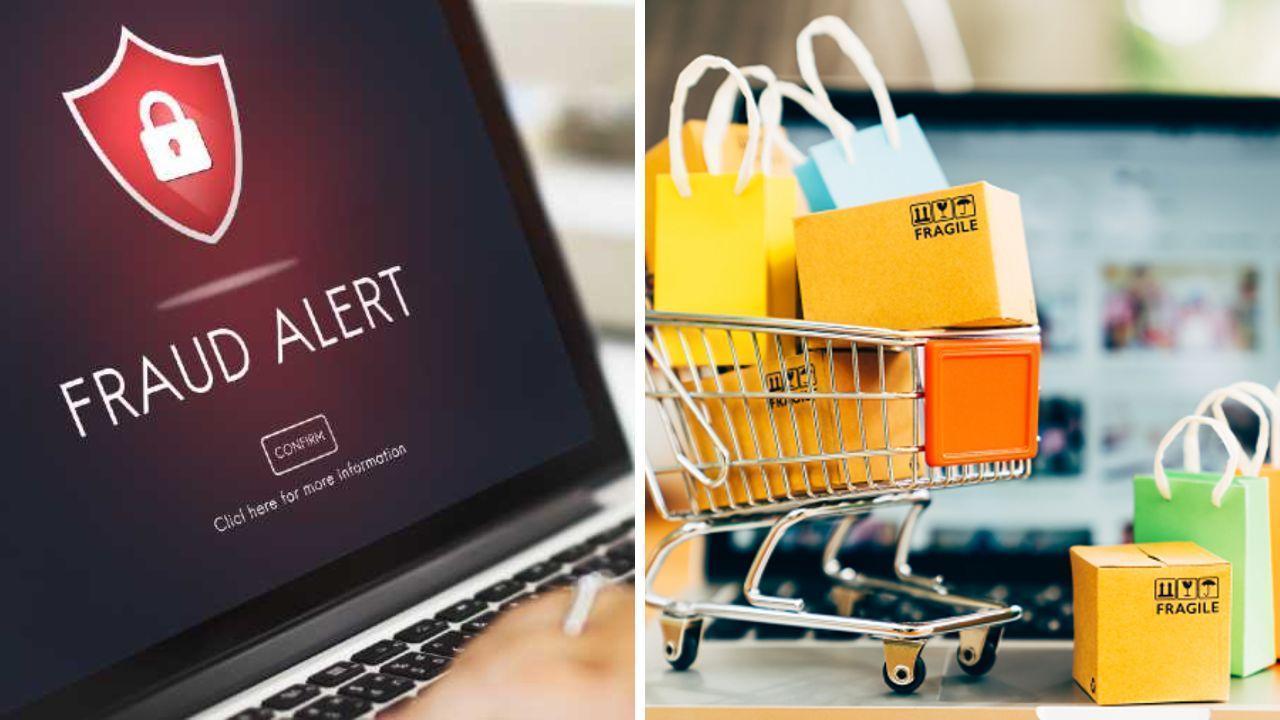
Post by: Vansh Kumar
In today’s digital age, online shopping has become a convenient way to buy everything from clothes to electronics. However, with this convenience comes the risk of encountering fake websites. These deceptive sites can trick you into sharing personal information or losing money on nonexistent products. Knowing how to spot fake websites before shopping online is crucial for a safe shopping experience. This guide will help you identify red flags and protect yourself from online scams.
Online shopping has exploded in popularity, especially in recent years. The ability to browse countless products and make purchases from the comfort of your home is undeniably appealing. Unfortunately, this growth has also led to an increase in fraudulent websites designed to exploit unsuspecting shoppers. Fake websites can look convincing, making it difficult to differentiate between a legitimate retailer and a scam. Being aware of the signs can save you from falling victim to these scams.
One of the first things to consider when visiting a website is its URL. Legitimate websites usually have URLs that start. The "s" stands for secure, indicating that the site has an SSL (Secure Socket Layer) certificate. Additionally, look for a padlock symbol in the address bar, which confirms that the connection is secure. If a website’s URL looks suspicious or contains misspellings or unusual characters, it’s a significant red flag t hat you should proceed with caution.
hat you should proceed with caution.
Reputable online retailers provide clear contact information, including a physical address, phone number, and email. Before making a purchase, check the website for this information. If it’s missing or appears unprofessional, such as a generic email address or an unlisted phone number, it could indicate a fake website. Genuine businesses want to ensure their customers can reach them easily, so the absence of contact details should raise concerns.
The overall design and functionality of a website can also give you clues about its legitimacy. Professional websites typically have a polished look, with high-quality images, clear navigation, and well-written content. If you encounter a website that seems poorly designed, has broken links, or contains numerous grammatical errors, it’s worth reconsidering your decision to shop there. Legitimate businesses invest in their online presence, while fake websites often cut corners to save costs.
Before making a purchase from a new online store, take a moment to read reviews and ratings. Look for feedback on independent review platforms rather than relying solely on testimonials found on the website itself. Check for common complaints about product quality, delivery issues, or difficulty in obtaining refunds. If you see a pattern of negative reviews, it’s best to avoid that website. Genuine businesses generally have a mix of reviews, while fake websites may have overly positive feedback that seems suspicious.
When shopping online, it’s vital to ensure that the website offers secure payment options. Reputable retailers typically accept well-known payment methods such as credit cards, PayPal, or other secure payment platforms. If the website only accepts unusual payment methods, like wire transfers or cryptocurrency, be cautious. These payment options may make it difficult to recover your money in case of fraud. Always choose websites that provide secure and widely recognized payment methods.

Before finalizing a purchase, take a close look at the website’s return and refund policies. Legitimate businesses clearly outline these policies, including timelines for returns and conditions for refunds. If a website has vague or confusing return policies, it could be a sign of a fake site. Be wary of businesses that make it difficult to return products or don’t offer any refund options, as this can indicate an intention to scam customers.
Sometimes, your instincts can be your best defense against fake websites. If something feels off about a site—whether it's the prices being too good to be true, the design, or the overall experience—trust that feeling. It’s always better to err on the side of caution. If you’re unsure about a website, take a step back and do more research before proceeding with your purchase.
There are several online tools and resources designed to help you identify fake websites. Websites like ScamAdvisor, SiteJabber, and Trustpilot provide user-generated reviews and ratings for various online retailers. You can also use WHOIS lookup tools to check the domain registration details, which can reveal how long a website has been in operation. If a website is very new or the registration details are private, it may be a red flag.
This article explains how to spot fake websites before shopping online. It highlights essential tips to help you identify unsafe sites and protect yourself while shopping. Key points include checking the website's URL for security, looking for clear contact information, and evaluating the site’s design. Additionally, reading reviews and ensuring secure payment options are crucial steps. By understanding these signs, you can safely enjoy online shopping without falling victim to scams. Knowing how to spot fake websites before shopping online can keep you safe and make your shopping experience enjoyable.
The information provided in this article on how to spot fake websites before shopping online is for general guidance only. While we aim to offer accurate tips, the online landscape is always changing, and new scams may emerge. Always verify details independently and consult trusted sources for specific advice on online shopping. For the latest updates on internet safety, please refer to official resources.
spot fake websites, shopping online, online scams, secure payment options, website URL, contact information, website design, online reviews, return policies, online shopping safety, internet security, fraud prevention, safe shopping tips, trustworthy websites, online retailers
#trending #latest #SpotFakeWebsites, #OnlineShopping, #InternetSafety, #SecurePayments, #FraudPrevention, #ShoppingTips, #OnlineScams, #SafeShopping, #TrustworthyWebsites, #EcommerceSafety #breakingnews #worldnews #headlines #topstories #globalUpdate #dxbnewsnetwork #dxbnews #dxbdnn #dxbnewsnetworkdnn #bestnewschanneldubai #bestnewschannelUAE #bestnewschannelabudhabi #bestnewschannelajman #bestnewschannelofdubai #popularnewschanneldubai

Delicious and Easy 10 Tasty Recipes to Try Today...Read More.

Emirates Foundation's Sanid Program trained 341 volunteers in first aid, fire safety, and crisis response, enhancing emergency preparedness across the UAE....Read More.














New E-Skin Enables Touchless Control and Robot-Like Sensation
Revolutionary e-skin mimics human touch, allowing touchless control, aiding robots, and helping peop

UAE to Launch Digital Dirham CBDC by Year-End for Secure, Efficient Payments
The UAE will introduce its Digital Dirham CBDC by year-end, enhancing security, transparency, and ef

Teenager Mensik Stuns Djokovic in Miami Open Final Upset
Jakub Mensik, 19, shocked Novak Djokovic in Miami, denying him his 100th title with a thrilling stra

IIMA's 60th Convocation & First International Campus in Dubai
IIMA held its 60th convocation, announced a Dubai campus, launched a new centre, and introduced a fi

Hamdan bin Zayed Performs Eid Prayer & Receives Well-Wishers
Sheikh Hamdan bin Zayed prayed on Eid in Al Mirfa, welcomed well-wishers, and reflected on the value